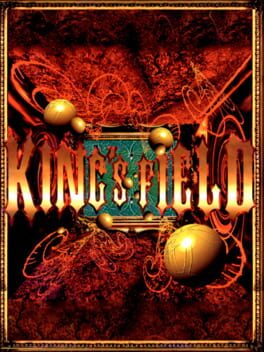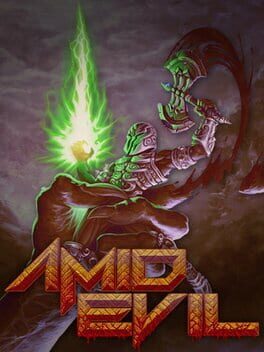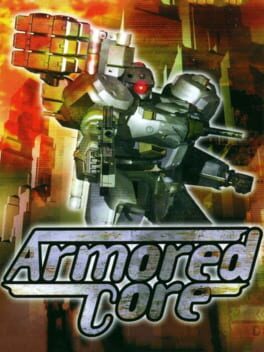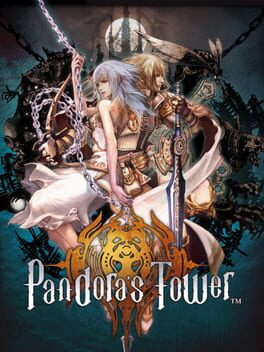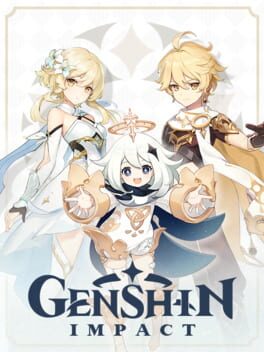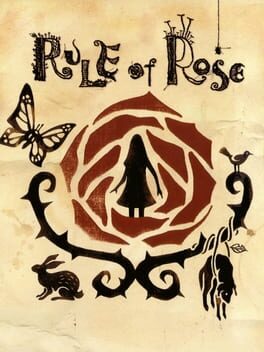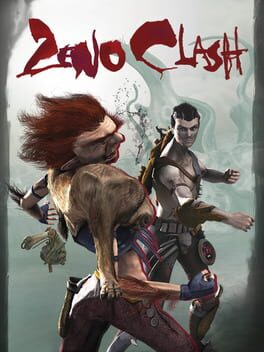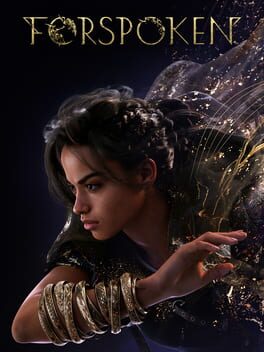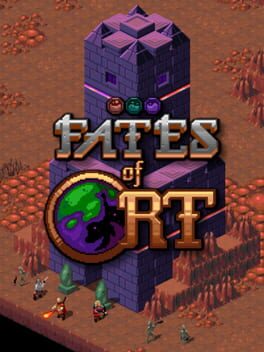kaishek
2000
2000
This review contains spoilers
I wrote a long review of a book (Third Edition's The Legend of Final Fantasy IX) about FFIX for RPGFan. Here is some of it, with most of the book specific stuff taken out. I'm focused on the game's hidden and not-so hidden themes.
Gaia and Terra: The Worlds Are a Stage
FFIX's planet Gaia is a wonderfully realized character. It makes perfect sense now, but I had never put together the fact that the existence of the monster-infested mist has driven the population of Gaia to the uplands. All of the major cities are on high plateaus or mountainsides. The game itself does not take the player aside to describe these basic facts but assumes you’ll be able to carry on without knowing every clever bit of worldbuilding (a tactic plenty of modern JRPGs could learn from).
The mist that gives the Mist Continent (where most of the game takes place) its name is more sinister than just a smokescreen where monsters breed. It is also a clean and seemingly endless fuel source, perfect both for the civilian technologies that make Lindblum an industrial marvel but also for deadly weapons.
As an antagonist, the Iifa Tree is more inert but just as dynamic in its machinations as Kuja. The mist supplied by the alien parasite Iifa Tree ends up supplying the fuel for industrial advancement and inevitable war, spurred on by the solicitations of Kuja’s arms trading. It is also one of the more inspired callbacks to old Final Fantasy, as a more developed version of everyone’s favorite evil tree, Ex-Death.
But the Iifa Tree and Kuja are agents of the same grand plan. Death is what is required, above all, for Garland the Guardian of Terra, and with the creep of Gaian civilization into the mountains and away from the mist, the Black Mages were the next step in creating the bloodbath necessary to siphon souls through the Tree and weaken Gaia’s crystal. The soulless Black Mages, created with Kuja’s incredible magical abilities, would be peddled to Gaian leaders jealous of the mist-led advancements of their neighbors as the perfect soldiers. It was a strange imitation of the very soulless genomes Garland had created on Terra as receptacles for the souls of his people on the day their planet was restored.
Let’s take a breath. This is all cool as hell but it must be stated again how understated it is in the game itself. The conflicts are boiled down much more simply; good vs evil, plucky gang vs corrupted queen, puppets vs the puppeteer.
And really, this Terran/Human analogy is where the good stuff is. Terra and Gaia are both shorthands for Earth and humanity, with the Terrans happy to let their planet become a lifeless husk until it directly affects them. Their solution, of course, was to export their own voraciousness to the Gaians. There is little meditation on the sustainability of their way of life, only a sociopathic insistence that the planet of Gaia and its inhabitants shoulder the burden of supporting Terra. This is the logic of the imperial center and periphery. As we’ve seen, because of the Mist that the Terrans created via the Iifa Tree, the people of Gaia were pushed into nation-states that have begun to take on the characteristics of the voracious, warmongering Terrans. Those who made their living as farmers or small town artisans would find themselves run out of common lands into the swelling cities, in a fantastical recreation of the enclosure movement that privatized land in 18th century England and set the foundation for capitalism’s ascendence in that country.
Terra and Gaia have also collided before, literally. The collision was cataclysmic, obliterating most of Gaia’s native life (just as colonialism eradicated large swathes of the existing population, flora, and fauna), creating new life through violent synthesis. And just as guns and horses reshaped decimated societies in the new world, magic was a “gift” from the Terrans that changed Gaia forever. The Mist technology is just a kind of path-dependence, with the Terrans putting their finger on the scale like colonial powers did for the technological undertakings of their subjects and the powers in their orbit (like the Comanches and their horses, the Dahomey of West Africa and their guns and slaves, etc).
This is as sophisticated an exploration of colonialism as you’ll see in any medium, and Sakaguchi gives space to the player to understand the pathos of all involved, to see why the Terrans plot is wrong and not just be told. As the author spells out, “the game’s creators clearly shows their desire to tackle the subject of war head-on, without hiding it behind allegory or metaphor.”
The most spectacular proof of this are the FMV cutscenes. Where in classic Final Fantasy summons were limited to extra flashy battle spells or quick cutscenes that play out as fancy stage lights in a necessarily truncated, overtly theatrical presentation of the stories Sakaguchi and his team wanted to tell, in FFIX entire civilizations were destroyed in front of our eyes. NPCs we had just observed were annihilated, their families and homes along with them, with no hope for survival and attempts at heroic self-sacrifice made futile. FFIX made overt throwbacks to the theatricality of classic FF, but became shockingly real with the power of 3D.
These sudden scenes of mass destruction were what stuck with me the most playing the game as a kid. It might be a blessing of the PS1’s technical limitations, but the lack of character interjections during these scenes let the player form their own thoughts, and let the moments stand on their own. Even when you regain control of Zidane, his response is mostly muted observation, a deeply disconcerting attitude for the plucky protagonist. Even he realizes how small he is against the weapons of war. I would often replay the early beats of FFIX to revel in the moments just before everything hits the fan, and then watch those FMVs awestruck all over again. It is a full culmination of the writer's beliefs on war; its material origins and the cost in lives it extracts. Just superb economic storytelling.
Character Considerations
The author asserts that the main cast of FFIX are memorable thanks in part to the roles assigned to them, aka the jobs from classic Final Fantasy games past. While the book claims this becomes cliche, I would counter that FFIX is very playfully aware of these stereotypes, and that the writers finally felt comfortable expanding from the early FF characters as brief representations to something more actualized. It feels like the drawings have been enthusiastically colored in after nearly two decades of sketches. The author even, at one point, makes the comparison between FFIX’s characters and 17th century Italian theater (it is “more or less explicit”). IX’s cast is colorful and larger than life, a perfect fit for the stage.
Zidane is a flirtatious thief, but who’s impulses and addiction to camaraderie make him a natural leader in any adventure troupe. Despite his overabundance of charisma, he is an artificial creation, an alien golem put on Gaia to cause its destruction. Quite a heavy backstory for the guy with the Hanson haircut.
Steiner is a fighter in his role, but does not adhere to leadership despite his protestations. He is the pincushion for jokes much more than he is for damage, which is a fun jab at a fighter’s self importance (anyone who has played FF1 knows how important they are too).
Freya is the noble lancer or dragoon. Her obsession with her lover’s disappearance has led her away from duty to her country and into association with bad types, like our main hero. In the end this dereliction of duty is rewarded with tragedy threefold; the destruction of her homeland, the obliteration of Cleyra, and Sir Fratley’s amnesia.
Garnet is a white mage. She is an innocent princess, flitted to and fro between her mother Brahne via Steiner, her uncle Cid via Zidane and Tantalus, and Kuja. Everyone wishes to protect her so they may manipulate her or prevent her from being manipulated, so her internal journey is about finding autonomy.
Quina is a blue mage. You see, blue mages take abilities from monsters as their own. Quina does this by eating them. It’s a fun gag! If Quina isn’t on screen, people should be asking “where’s Quina?”
Amarant is a monk or black belt. His personality is a blackhole of martial prowess. He is consumed with the test of strength, and joins your party solely to understand the power of the monkey boy who bested him. He reads as a parody of the job.
Vivi, the black mage, is the one exception to “cliche” granted by the author of this book. And it’s true, Vivi is “clumsy and timid”, but aside from one character in FF4, there is no reason to believe this is not typical for black mages. They cover themselves in thick robes after all! FFIX cleverly takes this appearance and gives it a new spin; that is not a shroud but a stamp of their alienness, even more slaves of the Terrans than Zidane and Kuja. So then, Vivi’s achingly human personality is made to stand in contradistinction to the other black mages you encounter in FF9, not from classic FF.
The antagonists of Final Fantasy IX are equally well realized colored-in versions of previously used archetypes.
Garland is the megalomaniacal puppeteer. At this point, the implications of his machinations are so evil that any understandable logic they may have had (to save his people, to preserve his home) are drowned out by the suffering they would require. The book asks us to consider whether Garland is truly bad, or if he “is simply making sure that the mission entrusted to him is carried out, even if that means destroying a planet and its inhabitants.” I think this makes one bad, irrevocably, and you can have a complex and interesting character who is definitely a shade of black, not gray.
Kuja is the flamboyant swaggerjack. He makes any other character trying to share the stage with him feel inadequate as his theme overpowers theirs, like unseen dueling boomboxes.
The Iifa Tree is a subversion of general Japanese reverence for nature and an inversion of the sagely trees of other Japanese games (Ocarina of Time, Secret of Mana, etc). The book highlights this as a “surprising choice”. The Iifa Tree, though, is imposed by an outside, imperial power into a habitat that it is not native to, unlike something intimately connected with its habitat, like in Shintoism.
Necron is the surprise omnipotent jack-in-the box you didn't know was being wound up in the background. It bursts on the scene to cast judgment, which you can only thwart with the right mix of spells and attacks. As a trope, Necron-style final bosses have only become more prominent in JRPGS (“find and kill god”). But rather than a surprise, Necron is the most obvious finale possible for a game like FFIX. Necron is the very crystal at the heart of the series, and his monologue about the anxious fear of death consuming the lives of the living, and how this leads in turn to suffering is a judgment of the Terrans, with their suspended souls parasitically absorbing planets and inhabiting bodies that are not theirs, simply to continue existing.
It is also a judgment of the entire series, as people suffer under the fear of death and unleash their anger against one another in order to obtain the crystals. As the book points out, Necron is absolutely integral as a final step in the main cast understanding their existence, and triumphing over their fear of death.
Gaia and Terra: The Worlds Are a Stage
FFIX's planet Gaia is a wonderfully realized character. It makes perfect sense now, but I had never put together the fact that the existence of the monster-infested mist has driven the population of Gaia to the uplands. All of the major cities are on high plateaus or mountainsides. The game itself does not take the player aside to describe these basic facts but assumes you’ll be able to carry on without knowing every clever bit of worldbuilding (a tactic plenty of modern JRPGs could learn from).
The mist that gives the Mist Continent (where most of the game takes place) its name is more sinister than just a smokescreen where monsters breed. It is also a clean and seemingly endless fuel source, perfect both for the civilian technologies that make Lindblum an industrial marvel but also for deadly weapons.
As an antagonist, the Iifa Tree is more inert but just as dynamic in its machinations as Kuja. The mist supplied by the alien parasite Iifa Tree ends up supplying the fuel for industrial advancement and inevitable war, spurred on by the solicitations of Kuja’s arms trading. It is also one of the more inspired callbacks to old Final Fantasy, as a more developed version of everyone’s favorite evil tree, Ex-Death.
But the Iifa Tree and Kuja are agents of the same grand plan. Death is what is required, above all, for Garland the Guardian of Terra, and with the creep of Gaian civilization into the mountains and away from the mist, the Black Mages were the next step in creating the bloodbath necessary to siphon souls through the Tree and weaken Gaia’s crystal. The soulless Black Mages, created with Kuja’s incredible magical abilities, would be peddled to Gaian leaders jealous of the mist-led advancements of their neighbors as the perfect soldiers. It was a strange imitation of the very soulless genomes Garland had created on Terra as receptacles for the souls of his people on the day their planet was restored.
Let’s take a breath. This is all cool as hell but it must be stated again how understated it is in the game itself. The conflicts are boiled down much more simply; good vs evil, plucky gang vs corrupted queen, puppets vs the puppeteer.
And really, this Terran/Human analogy is where the good stuff is. Terra and Gaia are both shorthands for Earth and humanity, with the Terrans happy to let their planet become a lifeless husk until it directly affects them. Their solution, of course, was to export their own voraciousness to the Gaians. There is little meditation on the sustainability of their way of life, only a sociopathic insistence that the planet of Gaia and its inhabitants shoulder the burden of supporting Terra. This is the logic of the imperial center and periphery. As we’ve seen, because of the Mist that the Terrans created via the Iifa Tree, the people of Gaia were pushed into nation-states that have begun to take on the characteristics of the voracious, warmongering Terrans. Those who made their living as farmers or small town artisans would find themselves run out of common lands into the swelling cities, in a fantastical recreation of the enclosure movement that privatized land in 18th century England and set the foundation for capitalism’s ascendence in that country.
Terra and Gaia have also collided before, literally. The collision was cataclysmic, obliterating most of Gaia’s native life (just as colonialism eradicated large swathes of the existing population, flora, and fauna), creating new life through violent synthesis. And just as guns and horses reshaped decimated societies in the new world, magic was a “gift” from the Terrans that changed Gaia forever. The Mist technology is just a kind of path-dependence, with the Terrans putting their finger on the scale like colonial powers did for the technological undertakings of their subjects and the powers in their orbit (like the Comanches and their horses, the Dahomey of West Africa and their guns and slaves, etc).
This is as sophisticated an exploration of colonialism as you’ll see in any medium, and Sakaguchi gives space to the player to understand the pathos of all involved, to see why the Terrans plot is wrong and not just be told. As the author spells out, “the game’s creators clearly shows their desire to tackle the subject of war head-on, without hiding it behind allegory or metaphor.”
The most spectacular proof of this are the FMV cutscenes. Where in classic Final Fantasy summons were limited to extra flashy battle spells or quick cutscenes that play out as fancy stage lights in a necessarily truncated, overtly theatrical presentation of the stories Sakaguchi and his team wanted to tell, in FFIX entire civilizations were destroyed in front of our eyes. NPCs we had just observed were annihilated, their families and homes along with them, with no hope for survival and attempts at heroic self-sacrifice made futile. FFIX made overt throwbacks to the theatricality of classic FF, but became shockingly real with the power of 3D.
These sudden scenes of mass destruction were what stuck with me the most playing the game as a kid. It might be a blessing of the PS1’s technical limitations, but the lack of character interjections during these scenes let the player form their own thoughts, and let the moments stand on their own. Even when you regain control of Zidane, his response is mostly muted observation, a deeply disconcerting attitude for the plucky protagonist. Even he realizes how small he is against the weapons of war. I would often replay the early beats of FFIX to revel in the moments just before everything hits the fan, and then watch those FMVs awestruck all over again. It is a full culmination of the writer's beliefs on war; its material origins and the cost in lives it extracts. Just superb economic storytelling.
Character Considerations
The author asserts that the main cast of FFIX are memorable thanks in part to the roles assigned to them, aka the jobs from classic Final Fantasy games past. While the book claims this becomes cliche, I would counter that FFIX is very playfully aware of these stereotypes, and that the writers finally felt comfortable expanding from the early FF characters as brief representations to something more actualized. It feels like the drawings have been enthusiastically colored in after nearly two decades of sketches. The author even, at one point, makes the comparison between FFIX’s characters and 17th century Italian theater (it is “more or less explicit”). IX’s cast is colorful and larger than life, a perfect fit for the stage.
Zidane is a flirtatious thief, but who’s impulses and addiction to camaraderie make him a natural leader in any adventure troupe. Despite his overabundance of charisma, he is an artificial creation, an alien golem put on Gaia to cause its destruction. Quite a heavy backstory for the guy with the Hanson haircut.
Steiner is a fighter in his role, but does not adhere to leadership despite his protestations. He is the pincushion for jokes much more than he is for damage, which is a fun jab at a fighter’s self importance (anyone who has played FF1 knows how important they are too).
Freya is the noble lancer or dragoon. Her obsession with her lover’s disappearance has led her away from duty to her country and into association with bad types, like our main hero. In the end this dereliction of duty is rewarded with tragedy threefold; the destruction of her homeland, the obliteration of Cleyra, and Sir Fratley’s amnesia.
Garnet is a white mage. She is an innocent princess, flitted to and fro between her mother Brahne via Steiner, her uncle Cid via Zidane and Tantalus, and Kuja. Everyone wishes to protect her so they may manipulate her or prevent her from being manipulated, so her internal journey is about finding autonomy.
Quina is a blue mage. You see, blue mages take abilities from monsters as their own. Quina does this by eating them. It’s a fun gag! If Quina isn’t on screen, people should be asking “where’s Quina?”
Amarant is a monk or black belt. His personality is a blackhole of martial prowess. He is consumed with the test of strength, and joins your party solely to understand the power of the monkey boy who bested him. He reads as a parody of the job.
Vivi, the black mage, is the one exception to “cliche” granted by the author of this book. And it’s true, Vivi is “clumsy and timid”, but aside from one character in FF4, there is no reason to believe this is not typical for black mages. They cover themselves in thick robes after all! FFIX cleverly takes this appearance and gives it a new spin; that is not a shroud but a stamp of their alienness, even more slaves of the Terrans than Zidane and Kuja. So then, Vivi’s achingly human personality is made to stand in contradistinction to the other black mages you encounter in FF9, not from classic FF.
The antagonists of Final Fantasy IX are equally well realized colored-in versions of previously used archetypes.
Garland is the megalomaniacal puppeteer. At this point, the implications of his machinations are so evil that any understandable logic they may have had (to save his people, to preserve his home) are drowned out by the suffering they would require. The book asks us to consider whether Garland is truly bad, or if he “is simply making sure that the mission entrusted to him is carried out, even if that means destroying a planet and its inhabitants.” I think this makes one bad, irrevocably, and you can have a complex and interesting character who is definitely a shade of black, not gray.
Kuja is the flamboyant swaggerjack. He makes any other character trying to share the stage with him feel inadequate as his theme overpowers theirs, like unseen dueling boomboxes.
The Iifa Tree is a subversion of general Japanese reverence for nature and an inversion of the sagely trees of other Japanese games (Ocarina of Time, Secret of Mana, etc). The book highlights this as a “surprising choice”. The Iifa Tree, though, is imposed by an outside, imperial power into a habitat that it is not native to, unlike something intimately connected with its habitat, like in Shintoism.
Necron is the surprise omnipotent jack-in-the box you didn't know was being wound up in the background. It bursts on the scene to cast judgment, which you can only thwart with the right mix of spells and attacks. As a trope, Necron-style final bosses have only become more prominent in JRPGS (“find and kill god”). But rather than a surprise, Necron is the most obvious finale possible for a game like FFIX. Necron is the very crystal at the heart of the series, and his monologue about the anxious fear of death consuming the lives of the living, and how this leads in turn to suffering is a judgment of the Terrans, with their suspended souls parasitically absorbing planets and inhabiting bodies that are not theirs, simply to continue existing.
It is also a judgment of the entire series, as people suffer under the fear of death and unleash their anger against one another in order to obtain the crystals. As the book points out, Necron is absolutely integral as a final step in the main cast understanding their existence, and triumphing over their fear of death.
1994
I like how sluggish and how it looks like a mall parking garage at night. In my mind its like Body Harvest for the N64, objectively ugly but still atmospheric. Maybe zoomers wouldn't get the same feeling.
It's just a pretty simple iteration both on already existing dungeon crawlers and what would come after. Publishers were still testing the waters of what could translate from the PC market to consoles, what level of bullshit people would still put up with.
Once you learn how to time your swings the game is pretty routine. The games 5 floors are simple mazes but every other "path" (leveling, equipment) is very linear.
It's just a pretty simple iteration both on already existing dungeon crawlers and what would come after. Publishers were still testing the waters of what could translate from the PC market to consoles, what level of bullshit people would still put up with.
Once you learn how to time your swings the game is pretty routine. The games 5 floors are simple mazes but every other "path" (leveling, equipment) is very linear.
2019
yea this one is good too
Compared to DUSK it has less confined spaces. There's more projectile triangulating to do and the bosses are more imposing challenges. Stages are a little longer an the level geometry is wackier by default. Platforming is more present, and more frustrating if you're trying to get a proper clear without cheesing quicksaves.
Compared to DUSK it has less confined spaces. There's more projectile triangulating to do and the bosses are more imposing challenges. Stages are a little longer an the level geometry is wackier by default. Platforming is more present, and more frustrating if you're trying to get a proper clear without cheesing quicksaves.
2018
I'm still not great at PC kb/mouse shooters so I lean on checkpoints to smooth out frustrations from dying. The New Blood games, especially DUSK, are worth getting through in their entirety even if it means compromising the difficulty.
DUSK is not imitation, if imitation is a slight. It is samplings of DOOM, remixes of hillbilly horror and B movie schlock and the rediscovery of lovecraft in its most straightforward form.
DUSK & Amid Evil are stories made sincerely in a genre where irony and satire are easy. Some of these games (including DOOM 2016 to an extent) in trying to be epic through indifference come off more corny than the overwrought story dumps Tom Hall defended so strenuously in the original DOOM. He was right then and with DUSK he's never looked more right now. If boomer shooters are about playing with overindulgence like a yo-yo then DUSK walks the dog.
DUSK is not imitation, if imitation is a slight. It is samplings of DOOM, remixes of hillbilly horror and B movie schlock and the rediscovery of lovecraft in its most straightforward form.
DUSK & Amid Evil are stories made sincerely in a genre where irony and satire are easy. Some of these games (including DOOM 2016 to an extent) in trying to be epic through indifference come off more corny than the overwrought story dumps Tom Hall defended so strenuously in the original DOOM. He was right then and with DUSK he's never looked more right now. If boomer shooters are about playing with overindulgence like a yo-yo then DUSK walks the dog.
1997
When I was a kid I was for a short time addicted to this terrible Small Soldiers game (based on the hit movie). You created your own soldier (or whatever the animal/indigenous metaphor faction was called) and could accrue ingame money to buy custom parts.
The game ran at like 10 fps on my old 90s PC but it was an addicting loop. I would buy random parts and just watch my frankenstein's duke it out with the AI because it was easier than controlling it myself.
Armored Core would have absolutely OBSESSED my 8 y/o self. It would have leveled my conception of what games could be.
The robots are cool, they control stiffly at first but compared to most psx/n64 gen games Armored Core is very responsive. The missions are generally tight, and on a blind run you would have little idea what might happen since the mission briefings are very vague. Poor draw distance in the open air maps, and claustrophobic tunnels indoors keep you guessing even when the mission is unfolding. It also unfortunately incentivizes playing it safe with chunkier, slower AC's that can carry more ammo for missions that sometimes go longer than you might expect. Project Phantasm & Arena add those more focused PVAI pilot battles that make lightweight, nimble AC useful, but in AC1 they are a very risky bet.
8 y/o me would have just read everything on gamefaqs beforehand because that's just what I did back then, but that was also how I made game narratives explicable. AC never overestimates its storytelling capacity; it does not push the PSX to be a movie machine with wild, poorly rendered cutscenes. It's beautifully within its limits.
The game ran at like 10 fps on my old 90s PC but it was an addicting loop. I would buy random parts and just watch my frankenstein's duke it out with the AI because it was easier than controlling it myself.
Armored Core would have absolutely OBSESSED my 8 y/o self. It would have leveled my conception of what games could be.
The robots are cool, they control stiffly at first but compared to most psx/n64 gen games Armored Core is very responsive. The missions are generally tight, and on a blind run you would have little idea what might happen since the mission briefings are very vague. Poor draw distance in the open air maps, and claustrophobic tunnels indoors keep you guessing even when the mission is unfolding. It also unfortunately incentivizes playing it safe with chunkier, slower AC's that can carry more ammo for missions that sometimes go longer than you might expect. Project Phantasm & Arena add those more focused PVAI pilot battles that make lightweight, nimble AC useful, but in AC1 they are a very risky bet.
8 y/o me would have just read everything on gamefaqs beforehand because that's just what I did back then, but that was also how I made game narratives explicable. AC never overestimates its storytelling capacity; it does not push the PSX to be a movie machine with wild, poorly rendered cutscenes. It's beautifully within its limits.
2011
2020
It's a cool game but it has zones based on China, Southeast Asia, and Europe and has basically no non-white people. The representative duo for the Egypt region are fucking BEIGE.
Genshin is thick with activities, some of which are even fun. There's a story that slowly gets a little more confident in itself but 99% of the time you'll be playing for that next wish pull and grinding dailies.
Genshin is thick with activities, some of which are even fun. There's a story that slowly gets a little more confident in itself but 99% of the time you'll be playing for that next wish pull and grinding dailies.
2005
A friend once described Killer7 as suda51 reinventing the FPS genre based only on hearsay. Grasshopper is not comfortable within any kind of restrictions, genre or otherwise. A straightforward story or a straight laced shooter ruins the creative mojo.
But, like, should you play it? Recommendations for surrealist stuff like this is hard so I'll just say, if you hate America you'll love this game.
But, like, should you play it? Recommendations for surrealist stuff like this is hard so I'll just say, if you hate America you'll love this game.
2006
2009
2023
2015
A little too weird for how much of an RPG it is, if that makes sense. I wish there had been just a smidge less intentional incoherence.
It is a kind of weird that's warmly familiar though. Like a Hypnospace or Cruelty Squad, it's a brand of garish that belongs to the era of crude gross out cartoons, windows 95 clip art, and vibrant postmodernism. Before capital tamed the internet and reified popular culture into something more boring.
It is a kind of weird that's warmly familiar though. Like a Hypnospace or Cruelty Squad, it's a brand of garish that belongs to the era of crude gross out cartoons, windows 95 clip art, and vibrant postmodernism. Before capital tamed the internet and reified popular culture into something more boring.
2020
Fates of Ort makes you feel nostalgia for something you never played, it's wild.
It's a simple action rpg framework that lets you play with inventive spells, traipse around doing quests (that have pretty useful ingame hints to guide you if you desire), and learn about the world in organic ways.
Your power can easily snowball after the first few levels (especially if you choose Mind magic) . By level 6 I was unstoppable, which made doing some quests a bit of a chore. The maps are not too large, but your character is rather slow. Even if you stack as much walking speed increase as possible you'll grow tired of lollygagging around before long, especially when your character is so powerful that seeking out level ups or currency or equipment is mostly unnecessary.
It's a simple action rpg framework that lets you play with inventive spells, traipse around doing quests (that have pretty useful ingame hints to guide you if you desire), and learn about the world in organic ways.
Your power can easily snowball after the first few levels (especially if you choose Mind magic) . By level 6 I was unstoppable, which made doing some quests a bit of a chore. The maps are not too large, but your character is rather slow. Even if you stack as much walking speed increase as possible you'll grow tired of lollygagging around before long, especially when your character is so powerful that seeking out level ups or currency or equipment is mostly unnecessary.
2022


